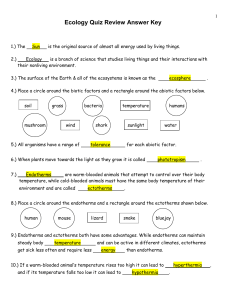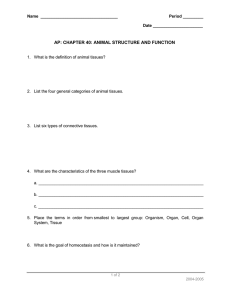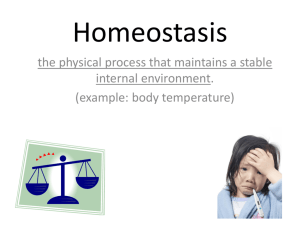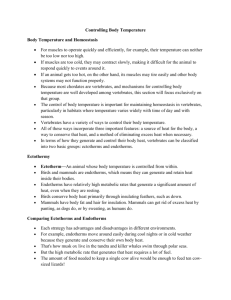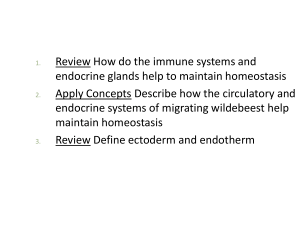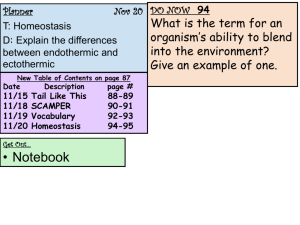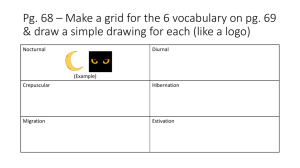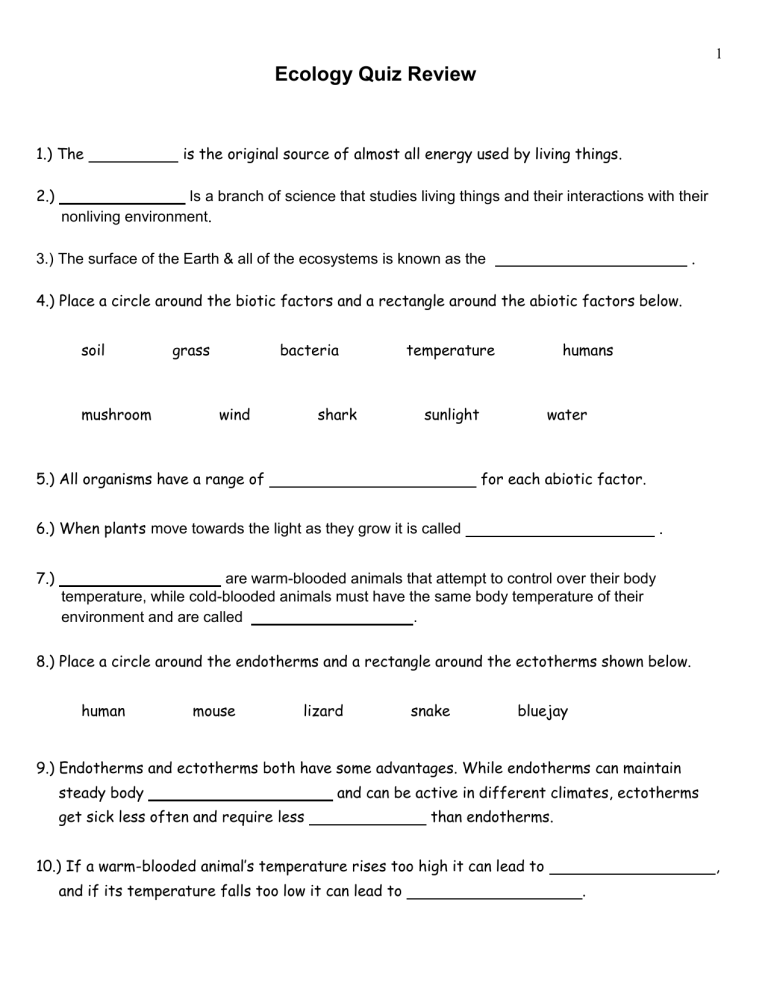
1 Ecology Quiz Review 1.) The 2.) is the original source of almost all energy used by living things. Is a branch of science that studies living things and their interactions with their nonliving environment. . 3.) The surface of the Earth & all of the ecosystems is known as the 4.) Place a circle around the biotic factors and a rectangle around the abiotic factors below. soil mushroom grass bacteria wind shark temperature humans sunlight 5.) All organisms have a range of water for each abiotic factor. 6.) When plants move towards the light as they grow it is called 7.) . are warm-blooded animals that attempt to control over their body temperature, while cold-blooded animals must have the same body temperature of their environment and are called . 8.) Place a circle around the endotherms and a rectangle around the ectotherms shown below. human mouse lizard snake bluejay 9.) Endotherms and ectotherms both have some advantages. While endotherms can maintain steady body and can be active in different climates, ectotherms get sick less often and require less than endotherms. 10.) If a warm-blooded animal’s temperature rises too high it can lead to and if its temperature falls too low it can lead to , . 2 11.) Some adaption plants have to live in dry environments include small that can open and 12.) 13.) , deep or widespread , stomata , or very thick . is an abiotic factor that can help animals smell predators and cool down in Addition to helping plants pollinate. cycles are the recycling of important elements such as carbon, hydrogen, oxygen, nitrogen, and phosphorous. 14.) During the water cycle, when water moving from tree leaves into the atmosphere it’s called . After water condenses and falls to Earth as precipitation it will move slowly through the soil in a process known as . 15.) The two main processes of the carbon cycle are chloroplast in plants and cellular done by the done by the mitochondria in both plants and animals. 16.) in the soil play a key role in the biogeochemical cycling of nitrogen. 17.) The weathering of rocks play a key role in the biogeochemical cycling of 18.) Bodies of water are classified as either oligotrophic, . , or eutrophic. Deep, clear bodies of water with low levels of nutrients are called 19.) . occurs when excessive nutrients enter a body of water (often from overuse of fertilizers). This leads to the overproduction of algae which can deplete oxygen levels in the water. This low oxygen condition is known as cause a significant depletion in the fish population. and can
